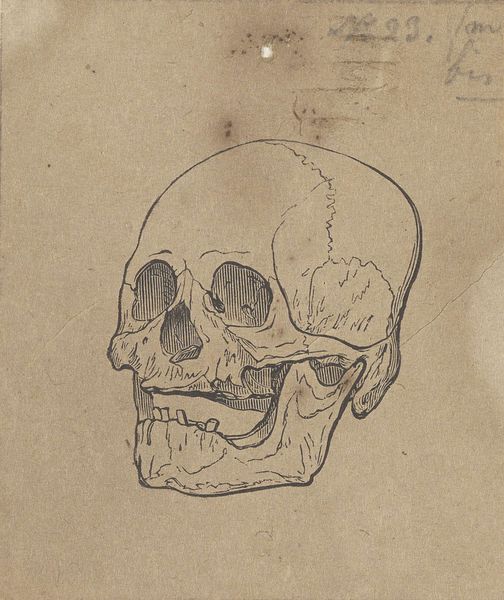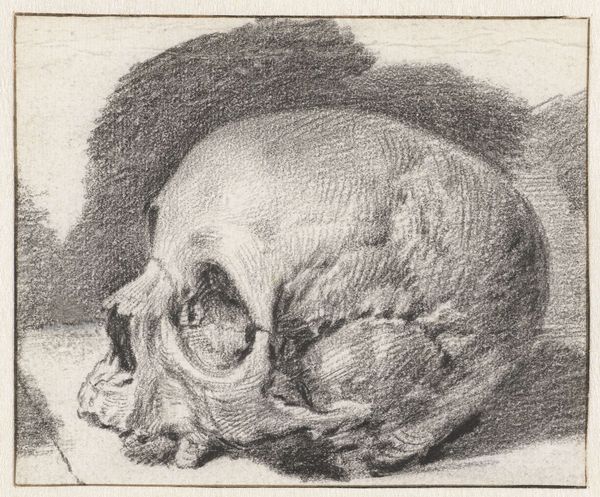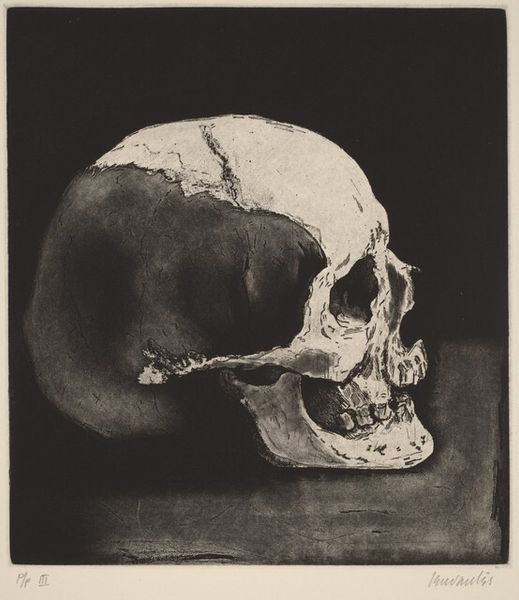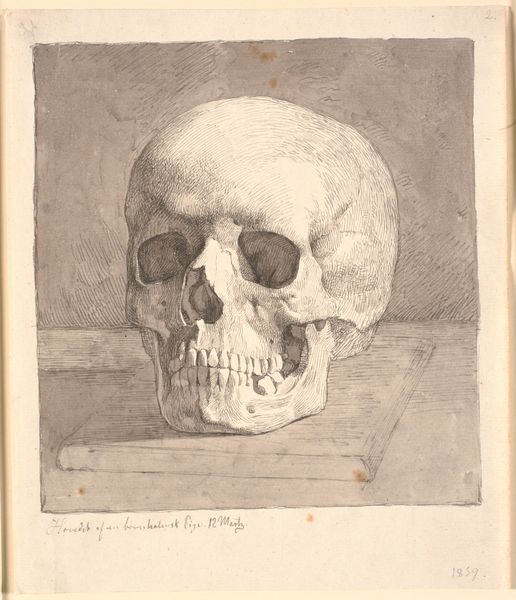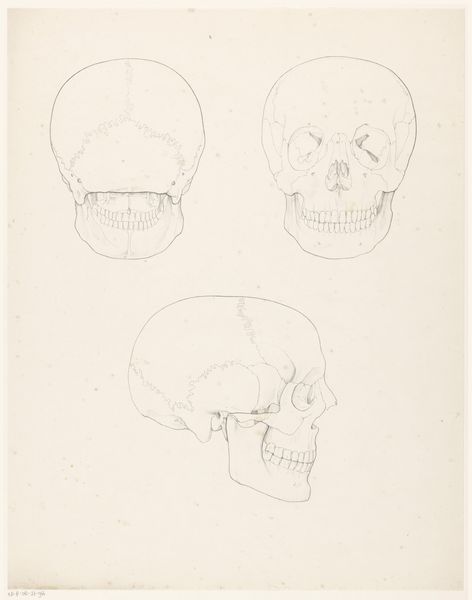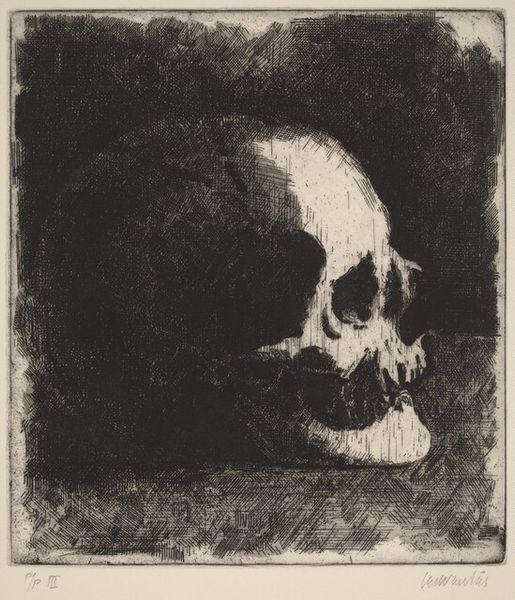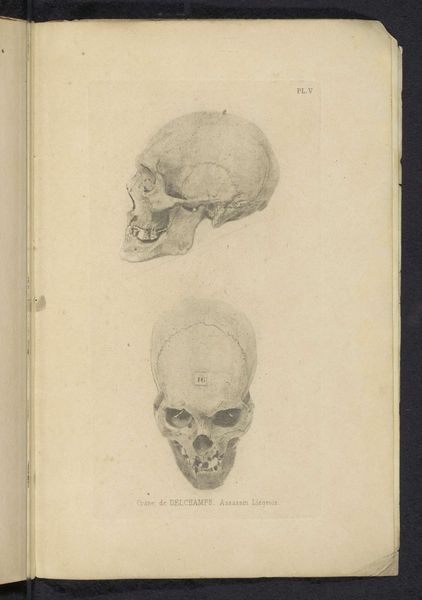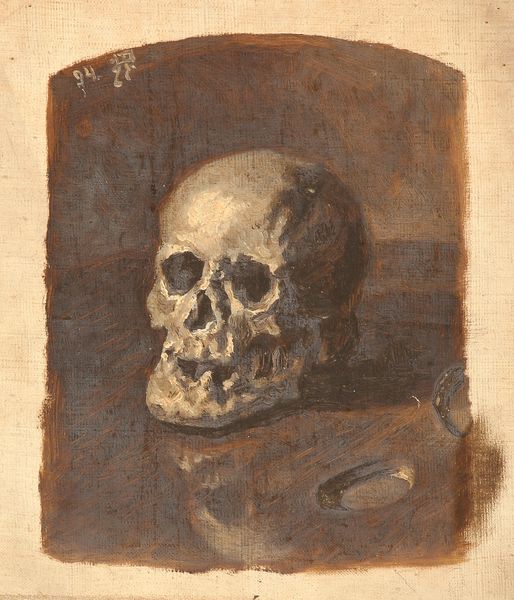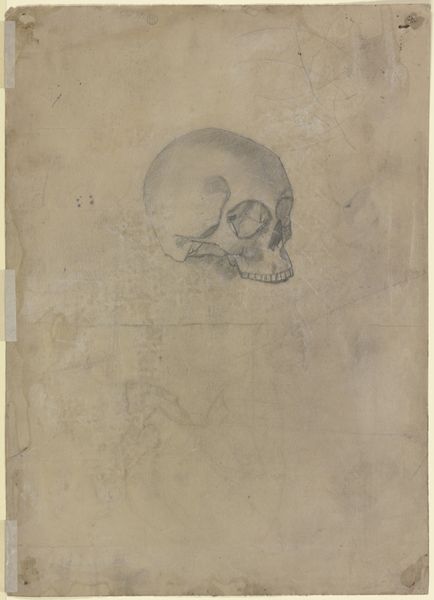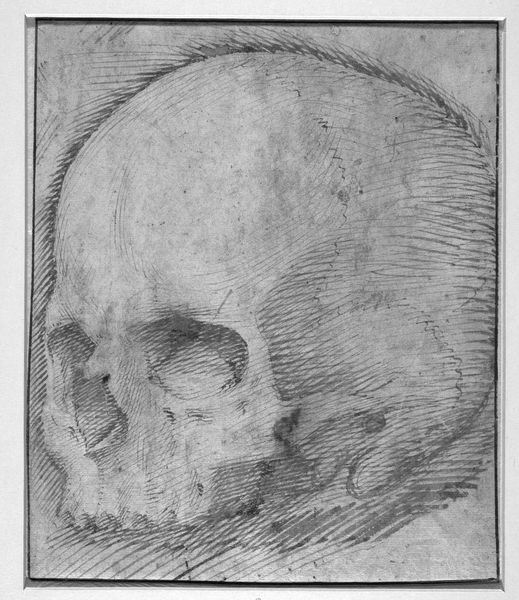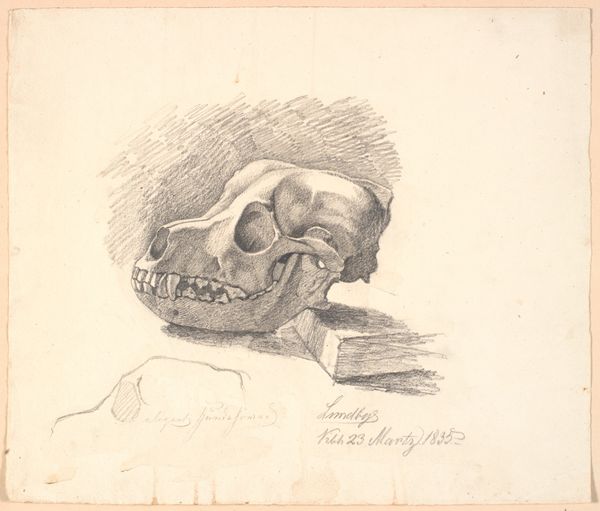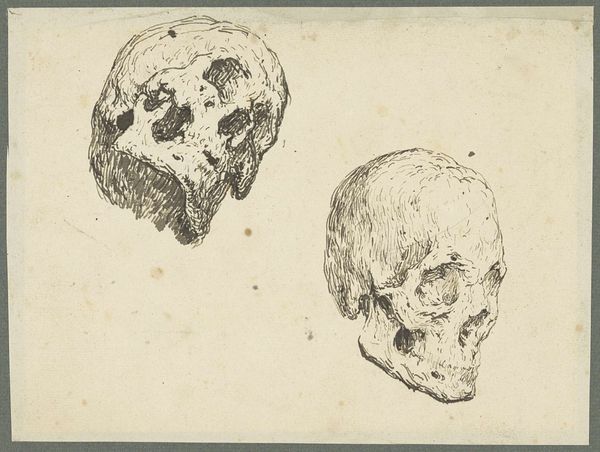
drawing, dry-media, pencil, graphite
#
pencil drawn
#
drawing
#
pencil sketch
#
charcoal drawing
#
dry-media
#
vanitas
#
pencil drawing
#
pencil
#
graphite
#
academic-art
Dimensions: height 336 mm, width 242 mm
Copyright: Rijks Museum: Open Domain
Editor: Here we have George Hendrik Breitner's "Doodshoofd", which translates to "Skull," made sometime between 1867 and 1923. It's a drawing done with pencil, graphite, and other dry media. There's a stillness to it, but also an intense focus on detail. What can you tell us about this piece? Curator: Well, on the surface, it seems to be a vanitas piece, reflecting the transience of life, echoing artistic trends from the Dutch Golden Age onward. But, placed within the historical context of Breitner's time, we must consider its position as an academic exercise, rooted in life drawing and anatomy studies that circulated within institutionalized artistic training. Do you see how the stark realism of the skull coexists with artistic and educational practices? Editor: That’s a great point. I guess I hadn't thought about it as a study, more as a memento mori. It also feels less…symbolic? Almost clinical. Curator: Exactly. Its potential symbolic function takes a back seat to the precision of the execution. It seems he focuses more on demonstrating technical skill, something crucial for an artist trying to establish credibility. What do you think about the implications of Breitner’s decision to show, or perhaps not show, this particular work to the public? Editor: Interesting question. Perhaps it served solely as a personal study. Or maybe displaying a 'vanitas' subject at that time felt a bit outdated, given shifting artistic interests? Curator: Indeed. Perhaps the very display of such a study outside the academic environment holds different layers of meaning. Ultimately, considering both its possible pedagogical origins and the social-historical landscape, enriches our understanding of this skull beyond just symbolic interpretation. Editor: I see it now. Thanks, that's given me a whole new perspective! Curator: It's always rewarding to recontextualize these objects in new ways.
Comments
No comments
Be the first to comment and join the conversation on the ultimate creative platform.
